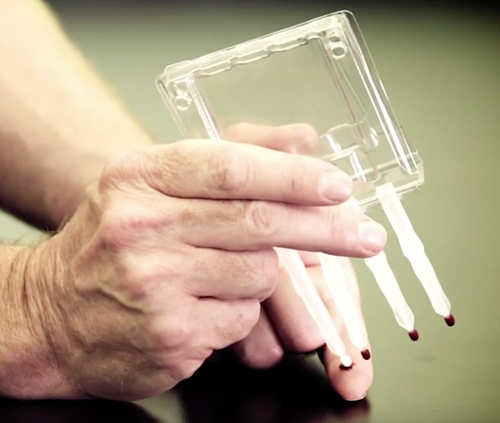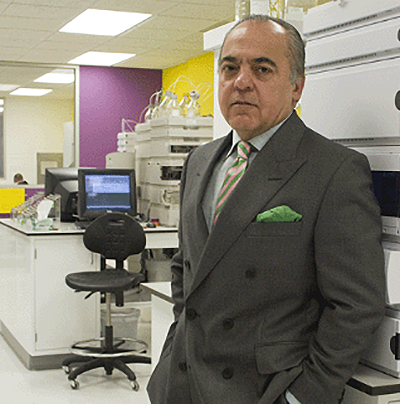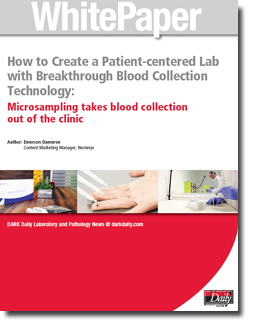McKinsey and Company Report Highlights Precision Medicine’s Advancements in Integrating Genetic Testing Results with Electronic Medical Records
New McKinsey report offers three market trends that could help clinical laboratories position themselves as front-runners in the race toward precision medicine
With federal Medicare reporting and reimbursement programs now weighted heavily toward precision medicine practices that involve genetic testing to reveal predispositions to certain diseases, the trend is widely recognized as the future of U.S. healthcare. But are clinical laboratories and anatomic pathology groups prepared to take advantage of the accelerating reporting and reimbursement requirements that go with it?
A report from global management consulting firm McKinsey and Company provides insights into how integrating genetic test results data into electronic medical records (EMRs) will impact the future of precision medicine (AKA, personalized medicine).
The report, titled, “Genetic Testing: Opportunities to Unlock Value in Precision Medicine,” notes, “Advanced analysis of genomic data integrated with electronic medical records and other data sets, combined with effective reimbursement strategies and full data-regulatory compliance, will distinguish winning diagnostics companies.”
Data/Costs Impact Profitability/Payments to Providers, including Medical Labs
The McKinsey report lists “three major trends that will affect the market for genetic testing.” They include:
- “Data integration and analytics to realize the value of data have become increasingly important for the healthcare delivery value chain;
- “Payers are facing increasing pressure on costs and looking for new opportunities to control them; and,
- “The US reimbursement landscape, which drives the profitability of most diagnostics players, is gradually evolving.”
These market trends may provide a roadmap for labs working to position their business in a healthcare industry where genetic sequencing, the data it produces, and evolving reimbursement methods affect a clinical laboratories financial well-being.
The Value of Genetic Test Data
Personal health data derived from genetic sequencing has value at the individual patient’s level when linked with other health indicators, as recent deals between direct-to-consumer (DTC) genetics testing companies—such as 23andMe—and various pharmaceutical companies demonstrate.
And, as artificial intelligence continues to be integrated into medical diagnostic technology, such data becomes even more valuable.

“Genetic testing, along with the current blooming of “omics” technologies, will continue to drive the pace of precision medicine. In this golden age of bioinformatics, the reimbursement landscape is evolving. The winners will gain first-mover advantages by seamlessly integrating existing big genetic or molecular data with electronic medical records—in full accordance with data privacy laws—to validate tests clinically and analytically through real-time advanced analytics,” the McKinsey report predicts. (Image copyright: MTB Europe.)
There is strong movement toward integrating genetic information into electronic medical records, as the National Institutes of Health (NIH) eMERGE program clearly demonstrates.
The Electronic Medical Records and Genomics (eMERGE) Network brings together researchers from genomics, statistics, clinical settings, and other areas of expertise in order to “develop, disseminate, and apply approaches to research that combine biorepositories with electronic medical record systems,” according to NIH’s website.
Similar efforts are underway through the National Human Genome Research Institute’s IGNITE (Implementing Genomics in Practice) program and the PREDICT (Pharmacogenomic Resource for Enhanced Decisions in Care and Treatment) program, launched in 2010 by Vanderbilt University.
However, data-privacy laws also are becoming stricter. HIPAA (Health Insurance Portability and Accountability Act) and GDPR (General Data Protection Regulation) strictly regulate the collection, retention, and sharing of patient data. Medical laboratories working to derive value from such data should ensure their processes are well within the letter of those laws.
Controlling the Impact of Cost and the Expense of Genetic Testing
In every area of healthcare, there are increasing pressures related to cost and genetic sequencing is no exception. McKinsey offers two reasons that payers are feeling the pinch:
- Costs are growing faster than insurance premiums; and,
- There are more innovative genetic and genome sequencing tests.
Payers hope that “innovative” genetic tests can lead to therapies or even cures that lower the cost of healthcare. However, a plethora of factors influence the development of genetic sequencing technology. Nevertheless, consumer demand is driving the costs down.
DTC genetic testing companies are leveraging these lowered costs. However, they also have other revenue streams—marketing their customers’ data, for example.
Although it may seem that 23andMe’s business model derives most of its revenue from selling its genotyping kits, that’s just one of the company’s revenue streams. In 2015, biotechnology company Genentech and DTC genetic testing company 23andMe reached a $60 million deal that gave Genentech access to test results data derived from 23andme customers who had previously signed agreements allowing their data to be used for research.
Dark Daily recently reported on one DTC genetic test customer who attempted to get her test results removed entirely from the Internet. (See, “Erasing ‘DNA Footprint’ from the Internet Proves Difficult for Consumers Who Provide Data to Genetic Testing Companies,” December 24, 2018.)
Opportunities for Clinical Labs
The three market trends included in the McKinsey report provide some guidance for clinical laboratories and genetic testing companies strategizing to be on the cusp of precision medicine.
Medical laboratories that integrate their data with physicians’ practice EHRs will be rewarded with first-mover status as genetic testing continues to evolve and become more recognized as a critical clinical tool. Additionally, clinical laboratories will play a key role in helping physicians prove medical necessity for genetic tests.
—Dava Stewart
Related Information:
Genetic Testing: Opportunities to Unlock Value in Precision Medicine
Electronic Medical Records and Genomics (eMERGE) Network
Implementing Genomics in Practice (IGNITE)
Personalized Drug Prescribing Program Expands, Upgrades
From Theory to Practice: Translating Whole-Genome Sequencing (WGS) into the Clinic













